Osiris REx Probe In 4K
Another Blender project, the Osiris-REx probe, sent out by NASA to obtain a sample of the Bennu asteroid. It was launched on September 8th, 2016. As I enjoy creating these silly projects in Blender, I am also simultaneously learning so much with each creation. My goal is to become a Blender expert, but there is so much more to learn.
Wikipedia: OSIRIS-REx (Origins, Spectral Interpretation, Resource Identification, Security, Regolith Explorer) is a NASA asteroid-study and sample-return mission. The mission's primary goal is to obtain a sample of at least 60 g (2.1 oz) from 101955 Bennu, a carbonaceous near-Earth asteroid, and return the sample to Earth for a detailed analysis. The material returned is expected to enable scientists to learn more about the formation and evolution of the Solar System, its initial stages of planet formation, and the source of organic compounds that led to the formation of life on Earth.
OSIRIS-REx was launched on 8 September 2016, flew past Earth on 22 September 2017, and rendezvoused with Bennu on 3 December 2018. It spent the next several months analyzing the surface to find a suitable site from which to extract a sample. On 20 October 2020, OSIRIS-REx touched down on Bennu and successfully collected a sample. Though some of the sample escaped when the flap that should have closed the sampler head was jammed open by larger rocks, NASA is confident that they were able to retain between 400 g and over 1 kg of sample material, well in excess of the 60 g (2.1 oz) minimum target mass. OSIRIS-REx is expected to return with its sample to Earth on 24 September 2023 and subsequently start its new mission to study 99942 Apophis as OSIRIS-APEX ('APophis EXplorer'), arriving at that asteroid in 2029.
Bennu was chosen as the target of study because it is a "time capsule" from the birth of the Solar System. Bennu has a very dark surface and is classified as a B-type asteroid, a sub-type of the carbonaceous C-type asteroids. Such asteroids are considered primitive, having undergone little geological change from their time of formation. In particular, Bennu was selected because of the availability of pristine carbonaceous material, a key element in organic molecules necessary for life as well as representative of matter from before the formation of Earth. Organic molecules, such as amino acids, have previously been found in meteorite and comet samples, indicating that some ingredients necessary for life can be naturally synthesized in outer space.
The cost of the mission is approximately US$800 million, not including the Atlas V launch vehicle, which is about US$183.5 million. It is the third planetary science mission selected in the New Frontiers program, after Juno and New Horizons. The principal investigator is Dante Lauretta from the University of Arizona. If successful, OSIRIS-REx will be the first United States spacecraft to return samples from an asteroid. The Japanese probe Hayabusa returned samples from 25143 Itokawa in 2010, and Hayabusa2 returned from 162173 Ryugu in December 2020. On 10 May 2021, OSIRIS-REx successfully completed its departure from Bennu and began its two-year return to Earth.
Overall management, engineering and navigation for the mission is provided by NASA's Goddard Space Flight Center, while the University of Arizona's Lunar and Planetary Laboratory provides principal science operations and Lockheed Martin Space Systems built the spacecraft and provides mission operations. The science team includes members from the United States, Canada, France, Germany, United Kingdom, and Italy.
After traveling for approximately two years, the spacecraft rendezvoused with asteroid 101955 Bennu in December 2018, and began 505 days of surface mapping at a distance of approximately 5 km (3.1 mi). Results of that mapping were used by the mission team to select the site from which to take a sample of the asteroid's surface. Then a close approach (without landing) was carried out to allow extension of a robotic arm to gather the sample.
Following a collection of material (60 grams), the sample will be returned to Earth in a 46 kg (101 lb) capsule similar to that which returned the samples of a comet 81P/Wild on the Stardust spacecraft. The return trip to Earth will be shorter and the capsule will land with a parachute at the Utah Test and Training Range in September 2023 before being transported to the Johnson Space Center for processing in a dedicated research facility.
The launch was on 8 September 2016 at 23:05 UTC on a United Launch Alliance Atlas V 411 from Cape Canaveral, Space Launch Complex 41. The 411 rocket configuration consists of a RD-180 powered first stage with a single AJ-60A solid fuel booster, and a Centaur upper stage. OSIRIS-REx separated from the launch vehicle 55 minutes after ignition.
Created in Blender 3.4.1 on April 15th, 2023.
Thanks to solar system.nasa.gov for supplying the 3D model for this project.
If you enjoyed this video, please smash that like button, & leave a comment or a question. You can always subscribe to my channel as well. Thanks for stopping by!
-
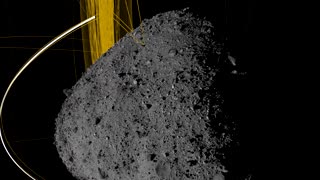 4:09
4:09
NASA Videos Plus
9 months agoOSIRIS-REx Slings Orbital Web Around Asteroid to Capture Sample _ 4K
182 -
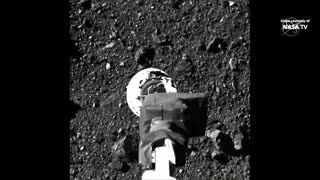 6:04
6:04
NASA Videos Plus
9 months agoSee OSIRIS-REx’s Grab A Sample of Asteroid Bennu!
154 -
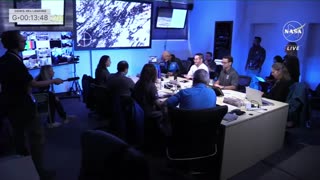 3:20:50
3:20:50
NASA 102
4 months agoOSIRIS-REx Asteroid Sample Return | NASA 102
37 -
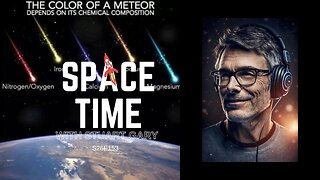 26:01
26:01
SpaceTime with Stuart Gary
5 months agoNew mission for NASA’s OSIRIS-Rex spacecraft | S26E153
691 -
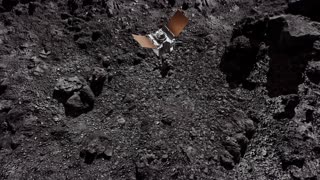 5:37
5:37
NASA Videos Plus
9 months agoAsteroid Bennu’s Surprising Surface Revealed by NASA Spacecraft
115 -
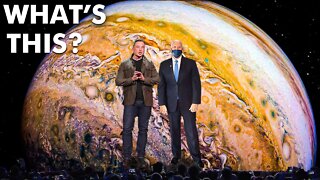 9:42
9:42
Future Space
1 year agoElon Musk & NASA's Terrifying NEW Discovery On Jupiter Changes Everything!
355 -
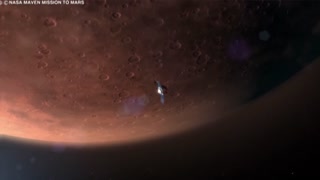 26:43
26:43
VIRABOT
1 year agoElon Musk Just Disclosed NASA's Terrifying Mars Find
42 -
 1:35
1:35
Knowledge Land
1 year agoOver 5,000 Exoplanets Discovered by NASA...and more to come
154 -
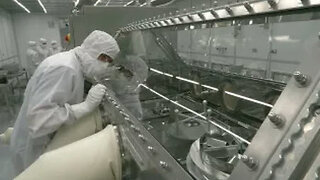 11:27
11:27
NASA Videos Plus
8 months agoOSIRIS-REx Sample Return Rehearsal
126 -
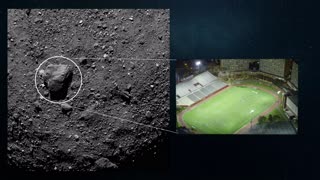 2:19
2:19
NASA Videos Plus
9 months agoSee asteroid Bennu close up!
123